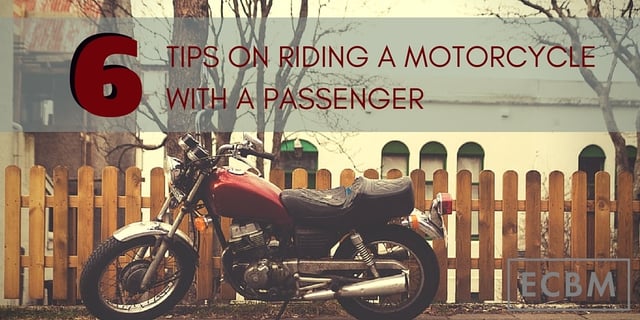GUEST POST Written by UNiQ Cycle Sounds of www.uniqcyclesounds.com
Tired of riding your motorcycle solo? Why not ask a friend or family member to hitch a ride? Whether you own a chopper or “street” bike, most modern-day motorcycles are designed to accommodate both the driver and one other passenger. However, there are a few things you should know regarding the safety of riding a motorcycle with a passenger.
1. Check Your State's Laws
Before allowing a friend to hitch a ride on your motorcycle, you should first check your state's laws regarding motorcycle passengers. The Department of Motor Vehicles (DMV) typically allows passengers on motorcycles only if the operator has a full motorcycle license. If you only have a learner's license (AKA instruction license), you cannot legally ride with a passenger on board.
2. Footrests
In order to provide stability and balance, motorcycles have footrests on which the operator and passenger can rest their feet. Make sure the passenger can reach these footrests before allowing him or her on your motorcycle. If the passenger is unable to reach them, you should refrain from allowing him or her to ride.
3. Watch the Pipes
As a motorcycle owner, you are probably well aware of the dangers of placing your legs near the pipes, especially if you are wearing shorts. Passengers, however, may unknowingly place their legs on the pipes, burning themselves in the process. Let your passenger know that the pipes (and muffler) gets hot, and that he or she should avoid touching it during the ride.
4. Hold Tight
Motorcycle passengers should either hold the rider's waist, or the bike's passenger handlebars (assuming it has them).
5. Wear A Helmet
I know this probably sounds like common sense, but it's still worth mentioning that both the motorcycle operator and passenger should wear helmets. Each year, hundreds of motorcyclists lose their lives in collisions and accidents, a large majority of which could be avoided if they wore helmets. Even if your state doesn't have a law that requires motorcyclists to wear a helmet, it's still recommended that you do so. The two or three minutes that it takes to put on a helmet could mean the difference between life or death – and this principle holds true for both the operator and passenger.
6. Passengers Add Weight to a Motorcycle
Keep in mind that riding a motorcycle with a passenger means your bike weighs more, which will in turn affect its speed, performance and handling. With an extra 100-250 pounds, you'll need more “stopping distance” when braking. Furthermore, you can expect your motorcycle to accelerate more slowly than it would without a passenger.

